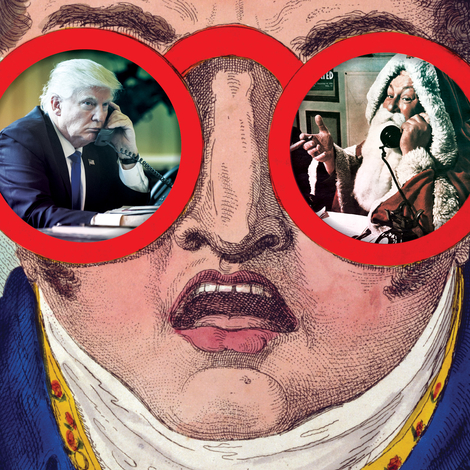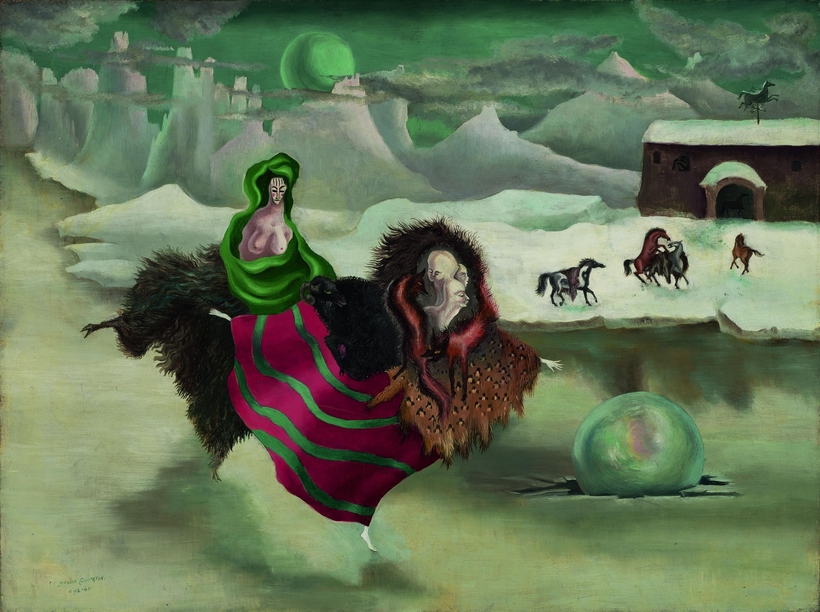When a teenage Leonora Carrington announced to her father, a wealthy industrialist in the north of England, that she wanted to study art, he proposed that she breed fox terriers instead. Carrington, who maintained a lifelong aversion to conformity, fortunately did not follow her papa’s advice. At the age of 15, in 1932, she traveled to Florence, where she received her first formal training in painting, at Mrs. Penrose’s Academy of Art—a reputable boarding school whose alumni included the dancer Gloria Braggiotti Etting and the art historian Sir Harold Acton.
Carrington’s discovery of Renaissance art during those early years in Florence, and its lasting impact on her career, is the subject of “Leonora Carrington,” the first solo exhibition of her work to be held in Italy. Opening next Saturday at Milan’s Palazzo Reale, the show consists of 65 paintings and drawings, plus photographs, notebooks, and books from Carrington’s personal library.

The exhibition follows a period of sustained posthumous interest in the artist’s Surrealist oeuvre. Carrington, who died in 2011 at age 94, headlined the 2022 Venice Biennale, which took its title from her storybook, The Milk of Dreams. Her work has also become catnip for collectors. Last year, her phantasmagorical painting Les Distractions de Dagobert (1945) fetched $28.5 million at auction, easily a record price for the British-Mexican artist.
“I’m like a hyena. I get into the garbage cans,” Carrington once said. “I have an insatiable curiosity.” That propensity announced itself in Florence, where Carrington spent hours in the Uffizi studying the Renaissance trecento and quattrocento paintings. A notebook she kept at the time shows a special interest in the cassoni chests painted with moral fables and fairy tales, as well as in altarpiece predella panels.
“She mixed many things, and in some paintings, what I can see from the Renaissance, even Pythagoras, is the use of sacred geometry that can be quite subtle,” explains the exhibition’s Mexican co-curator, Tere Arcq. The work of Sienese artists in particular, such as Sassetta, Francesco di Giorgio Martini, and Giovanni di Paolo, bequeathed to Carrington a love of jewel-like tempera painting and influenced her composition, palette, and style. Carrington’s great friend the eccentric English collector Edward James once likened her paintings to Pompeian frescoes.

Several accomplished watercolors from this period are included in the exhibition, such as Sisters of the Moon, Fantasia (1933). They depict enduring themes in Carrington’s work: powerful, imaginary women endowed with esoteric knowledge; fantastical beasts living in harmony with humans. The German Surrealist artist Max Ernst nicknamed Carrington “the bride of the wind,” after they embarked on a passionate love affair when she was 19 and he a married man of 47. This untrammeled and elusive side of Carrington’s personality was something that Arcq witnessed firsthand when she befriended the artist, who’d moved to Mexico City in late 1942 to escape the war.
“She was always a superstar in Mexico,” Arcq says. “But she never wanted to be put on the spot about the meaning of her work or about discussing some personal things. Leonora really wanted people to get into a painting and see what they could find on their own.”
“Leonora Carrington” will be on at the Palazzo Reale, in Milan, from September 20, 2025, to January 11, 2026
Tobias Grey is a Gloucestershire, U.K.–based writer and critic, focused on art, film, and books


